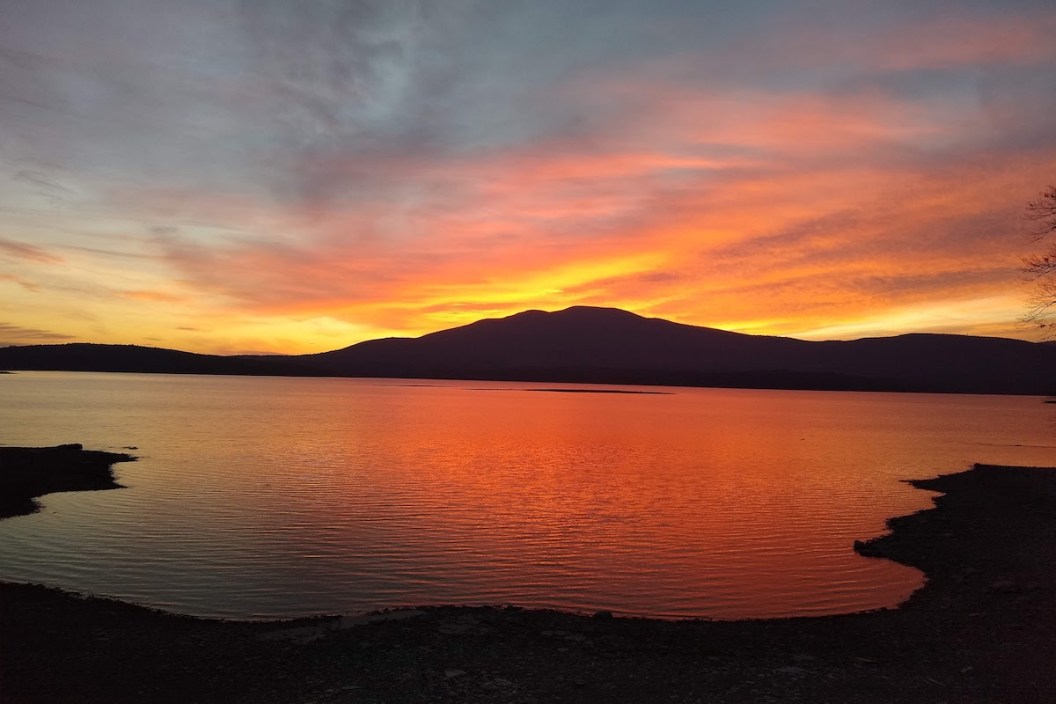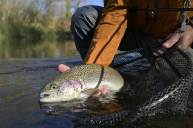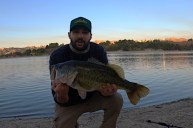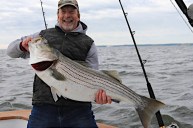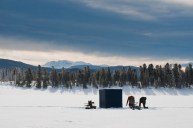The Ashokan Reservoir is the best fishing reservoir that you've never heard of.
There may not be that many folks outside of New York State that have heard of the Ashokan Reservoir, situated in the eastern Catskill Mountains, but that's about to change. Those of us lucky enough to fish in the Ashokan will tell you that it is filled with breeding size rainbow and brown trout, and walleyes just to name a few.
This reservoir was created to feed New York City and provide a freshwater drinking supply by damming one of NY's fabled wild trout streams: the Esopus Creek. Each year in March and April, big, healthy, wild trout swim upstream above the reservoir to spawn in the Esopus by making their beds to propagate the species.
The Ashokan Reservoir not only harbors wild trout though. Here an angler can find some great fishing for largemouth and smallmouth bass, even some big walleyes. As with many reservoirs across North America, the original idea of creating energy or a drinking water supply has been overshadowed by the fact that it has grown into an amazing fishery. That always seems to be the case with these manmade reservoirs, but I digress.
Creating the Ashokan Reservoir
According the DEC, the Ashokan Reservoir, which is located just 14-miles west of the City of Kingston in Ulster County, was created in 1915 by the construction of some five miles of dams and dikes below the Esopus Creek drainage.
At 8,315 acres and over 44 miles of shoreline it makes it one of the biggest reservoirs of the 19 that feed the vast NYC water supply system. The largest is said to be the New Croton Reservoir, which can hold an astounding 19 billion gallons of water.
The Ashokan Reservoir is broken into two basins, the east basin and the west basin, by a dividing weir. The eastern basin being the larger of the two. The Ashokan is one of two reservoirs in the NYC Catskill water supply system, the other being the Schoharie Reservoir. Between these two reservoirs, they supply roughly 40 percent of New York City's daily drinking water needs in non-drought periods.
Water from the Ashokan Reservoir is carried southeast, then continues under the Hudson River via the 92-mile Catskill Aqueduct, which has a maximum depth of over 1,100 feet. All this happens by sheer gravity as there are no pumping stations along the way until it enters the New York City water supply distribution at Hillview Reservoir in Yonkers, just north of the City line.
Fishing the Ashokan Reservoir
So often when we discuss fishing and hunting in New York State we talk about its DEC, (Department of Environmental Conservation) but for the purposes of fishing and even hunting around the reservoir system, it is important to know that the 19 reservoirs which supply the Big Apple with drinking water are owned, operated, and protected by the NYCDEP: New York City Department of Environmental Protection.
The NYCDEP provides for outdoor loving folks to access and use these lands and waterways, but they must first obtain a permit to do so. The best part is that it is free and virtually anyone can get one. Once the permit is procured, fishermen can fish from the shore or from a boat in specific areas of the Ashokan, but here is where the grey area begins.
The rules on the Ashokan Reservoir are as follows: no swimming, no canoes, no kayaks, inflatables, collapsibles, sculls, or sailboats are permitted on the reservoir, and what's more: no motors, even trolling motors are not allowed. (electronics are allowed)
What is allowed on the reservoir is an aluminum rowboat that is between 11'6" and 16' long and at least 42" in width. Your rowboat must be processed before it can go out on the water by having all of your boat's pertinent information, (make, model, serial number, etc) your personal contact information, and a valid NYCDEP access permit.
Then you must have your boat steam cleaned, including anchors, ropes, and paddles. Authorized vendors will then tag your boat as being cleared to use on Ashokan. For those who are wondering, this cleaning process simply ensures invasive species like Zebra mussels and other aquatic pests are not accidentally introduced to the reservoir.
Worth the Trouble
The DEC lists no less than "Brown Trout, Rainbow Trout, Smallmouth Bass, White Perch, Walleye, Largemouth Bass, Yellow Perch, Rock Bass, Black Crappie, Bluegill, Redbreast Sunfish, Brown Bullhead, Yellow Bullhead" as species to fish for in the Ashokan. There's not many places you can enjoy that much variety in species to catch anywhere else in New York.
Not only that, but there are some big fish lurking in the depths. Just take the former state record brown trout - 19 pounds 14 ounces. It was caught in 1923 at the point where the Esopus Creek meets the upper part of the reservoir. Sure, that was long before stocking occurred in Lake Ontario, but there's more. For instance, in April 2015, DEC Fisheries staff netted a 17-pound walleye from the east basin of Ashokan Reservoir during an electrofishing survey.
It should be noted that, while many of the NYC reservoirs allow ice fishing, it is not legal on the Ashokan Reservoir.
The wild population of rainbow and brown trout use the upper Esopus Creek as their spawning and rearing area each year making it one of the best wild trout streams in NYS. Even at that, the DEC uses supplemental stocking of over 15,000 brown trout to make sure that this fishery is hardy and healthy for years to come. Sure, it's a little bit of pain to jump through all the hoops to fish this reservoir, but it's worth the extra effort for access to waters that hold some of the biggest fish in the state. Take a trip there this year to see what I'm talking about. Trust me, you'll want to come back!
Please check out my book "The Hunter's Way" from HarperCollins. Be sure to follow my webpage, or on Facebook and YouTube. Go to Rack Hub and use the coupon code Craiger for a new way to display those antler sheds!
NEXT: CASTAIC LAKE FISHING: WHAT'S SO SPECIAL ABOUT THIS CALIFORNIA WATERWAY?
